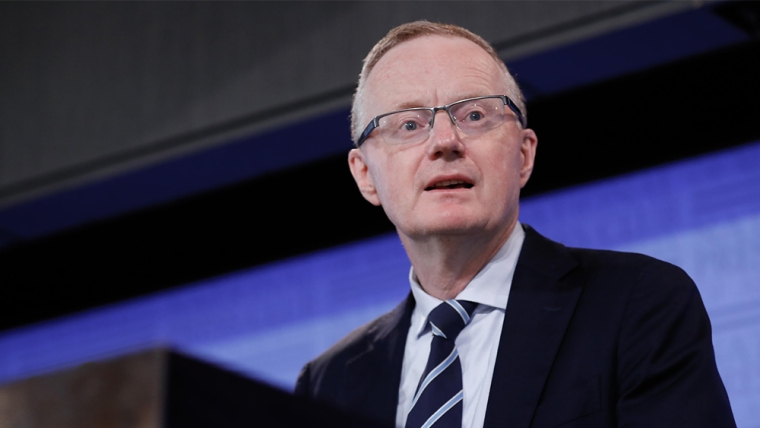
Seldom have the decisions of central bankers been so consequential. Never have their pronouncements attracted such scrutiny.
The outcome of Tuesday’s meeting of the board of the Reserve Bank of Australia (RBA) was no exception.
An increase of 0.50% in the cash rate was almost universally expected, the fifth such increase in as many months. Hence the widespread surprise when the bank announced a rise of only 0.25% (to 2.60%). At a time when many central bankers around the world are pressing on with oversize rate hikes of 0.5% or more, the RBA slowed down.
Why? RBA Governor Philip Lowe stated that the 25 basis point rise reflected the fact that “the cash rate has been increased substantially in a short period of time”. The lower-than-expected increase will suffice while the RBA “assesses the outlook for inflation and economic growth in Australia”.
The RBA is clearly nervous about pushing interest rates too high too quickly and tipping the Australian economy into recession. The objective is to return the inflation rate to the target 2-3% band “over time” and “while keeping the economy on an even keel”.
Philip Lowe captured the view of the RBA, the government, and most commentators when he stated that “the path to achieving this balance is a narrow one and it is clouded in uncertainty”.
The economy is sending mixed signals. Inflation is at its highest since the 1990s. The monthly Consumer Price Index (CPI) rose 6.8% in the year to June, 7% to July, and 6.8% to August. High but steady through the last three months. The RBA is forecasting a peak of 7.75% this year falling to 4% over 2023.
House prices, undoubtedly a factor in the RBA’s analysis, are heading in the opposite direction. The rapid rise in interest rates over the last six months has driven house prices down at a pace that, if maintained for much longer, could spell real trouble for the economy. By choosing a 0.25% interest rate hike this week, rather than the expected 0.5%, the RBA may have offered nervous homeowners and would-be first home buyers some hope that rates may not go as high as initially anticipated.
Relative to many similar countries, Australia has a high proportion of borrowers paying floating interest rates. This makes the market more sensitive to interest rate increases. Accordingly, rate increases in Australia may not need to be as great to dampen the economy as is the case elsewhere.
Falling house prices and a drop in Australians’ superannuation balances contributed to a not insignificant 3.3% fall in household wealth in the June quarter. It will have fallen further in the September quarter. The ‘wealth effect’ says that consumers spend more as the value of their assets increases and less when asset values fall.
In the week ended 2 October, the ANZ-Roy Morgen Consumer Confidence Index dropped by 2.3 points to 85.5. According to the report, “driving the decline was less confidence about the Australian economy’s performance”. This large drop will have been partly attributable to one noteworthy event during the survey period, namely the government ending the temporary halving of the fuel excise tax that it previously implemented to help with the cost of living.
However, there is also plenty of good news for Australia. The economy continues to grow, and unemployment remains at a near record low of 3.5%. Job vacancies are at record levels and wages are rising.
Retail spending is proving resilient and the latest monthly lift in spending exceeded expectations. For the moment at least, job security and the high level of savings that consumers built up through the pandemic may be compensating for declining household wealth.
The nation’s finances are also in much better shape than was projected just last year. Two weeks ago, the Treasurer, Jim Chalmers, announced that the budget deficit for the year to 30 June 2022 would be $50 billion less than predicted at budget time. This windfall for the new Treasurer is largely the result of higher-than-expected commodity revenues and lower-than-expected welfare payments.
Thanks to the war in Ukraine sustaining high energy prices, the lucky country’s export boom looks likely to continue for at least another year. According to the September report from the Department of Industry, Science and Resources, Australia’s commodity exports soared from A$308 billion in the June 2021 year to A$421 billion in the June 2022 year and are projected to rise further to $450 billion in the current year.
Iron ore, gas, and coal are the major contributors. A rapidly rising export star is lithium for use in batteries, with exports forecast to grow from $1 billion to $13 billion in just two years.
The export boom has been assisted by a significant fall this year in the value of the Australian dollar against the US dollar. The downside of that fall is upward pressure on inflation. The RBA will be conscious that slowing the pace of its rate hikes relative to the US risks weakening the $A further and exacerbating inflation.
The immediate response on Tuesday afternoon to the RBA’s lower-than-expected 0.25% cash rate increase was a 1.2% jump in the share market, a slump (albeit temporary) in the Australian dollar, and a fall in bond yields.
There was also a rush of commentary on the wisdom or otherwise of the RBA’s move. Some praised the RBA for its cautious approach. Others criticised the approach as risky, saying that it may ultimately result in Australian interest rates having to be higher for longer with adverse results for the economy.
RBA Governor Lowe is no stranger to criticism. In late 2021 he was still predicting that there would be no increase in the RBA cash rate until 2024 at the earliest. That didn’t turn out well.
Let’s hope the Governor’s forecasting skills prove more accurate this time around.
Ross Stitt is a freelance writer with a PhD in political science. He is a New Zealander based in Sydney. His articles are part of our 'Understanding Australia' series.
17 Comments
The RBA board are the worst in the OECD. They were the last to raise rates and first one to slow down the rates. It's just mad with so much inflation uncertainty (on the upside risk not downside) that they slowdown. Oh well looks like they'll need to play catch up in the months ahead - who hired Lowe seriously...
I used to blame the central banks, they are partly to blame, but their job is to manage the decline as best they can, so it is unfair to be too harsh on them. Their primary job is to maintain an orderly market for their government's debt, whatever it says on the tin.
It always pussled me why these seemingly decent, competent, hard working men seemed to stuff things up so much, but then I realised they are doing their best in an impossible job.
One of the other major roles of the central banks is to take the blame when things go wrong. That way the politicians can take credit when things are going well and blame the central bank when things go wrong.
The media role (as with David, our dear editor here on interest.co, bless him) is to blame the central bank when things go wrong, if it is a lefty administration, but blame the politicians if it is a right leaning one.
That is how the game is played.
Perhaps you have noticed that our currency ends in the world "dollar", signifying that is is a derivative of the USD and that we are in fact a US colony. This is real the driver behind the scenes.
See my next post.
yes I also believe RBA are playing a currency game. Could get their hands burnt, will be interesting.
In fairness to the RBA they did a lot less pandemic stimulus than New Zealand per capita and their inflation rate reflects that.
The currency is the adjuster to the deflating global credit bubble. People will not riot if the currency goes down 20%, but try giving everyone a 20% pay cut.
A real economist, (ie not a lickspittle government propagandist) explains:
https://www.dlacalle.com/en/dollar-strength-and-global-currency-debasem…
Do sign up for his free email feed, it will help restore your sanity.
US will only allow so much FX rate gains before it is also impacted, cant see the world devaluing itself out of debt,
I don't think that is the objective. The US wants us all to be in debt, provided it is indirectly to them. It is about power and control really. Amongst other things it allows the US to dictate terms to the debtor countries, using the IMF and the world bank as their agency. It also enables US multinationals to take over local competitors. Have you not noticed that Fastways is now Aramex?
I wonder what does the RBA know that we don't.
Nothing.
As the author has explained, their economy is much more sensitive to interest rate rises.
Well, we'll see about that hypothesis in coming quarters. If the inflation doesn't subside they are going to be a laughing stock.
Australian economist Bill Mitchell gives his views on the RBAs interest rate rises on his blog here.
RBA tom foolery continues while spending continues unabated
They all are expermenting at the cost of average citizen with literally no acconutability
True. Zero accountability. They effectively work for the banks as their primary stakeholder. Not the citizens. In modern liberal democracies, they are a contradiction.
RBA Governor Philip Lowe stated that the 25 basis point rise reflected the fact that “the cash rate has been increased substantially in a short period of time”.
So has inflation. You don't take you foot off the brake pedal half way through an emergency stop because the car is slowing down, you get the job done.
Australia is actually eight economies rolled into one federal system, this is often overlooked in economic analysis in a similar way to the USA. Trying to compare states and territories economic performance and funding models here is tricky, as two states WA and QLD fundamentally have a disproportionate share of the nations’s earning, wealth generation and GDP growth capacity relative to the size of their populations. Our housing markets are different too. WA and NT historically tend to run counter to rest of country. Our floating rates make us more sensitive to interest rate rises that is true, however the States and territories are experiencing the current economic conditions impacting the property markets very differently. It pays to get a bit more granular with analysis in Aussie, aggregate analysis of the nation as a whole is less helpful as state economic and social policies have significant measurable impacts on their respective populations.

We welcome your comments below. If you are not already registered, please register to comment.
Remember we welcome robust, respectful and insightful debate. We don't welcome abusive or defamatory comments and will de-register those repeatedly making such comments. Our current comment policy is here.